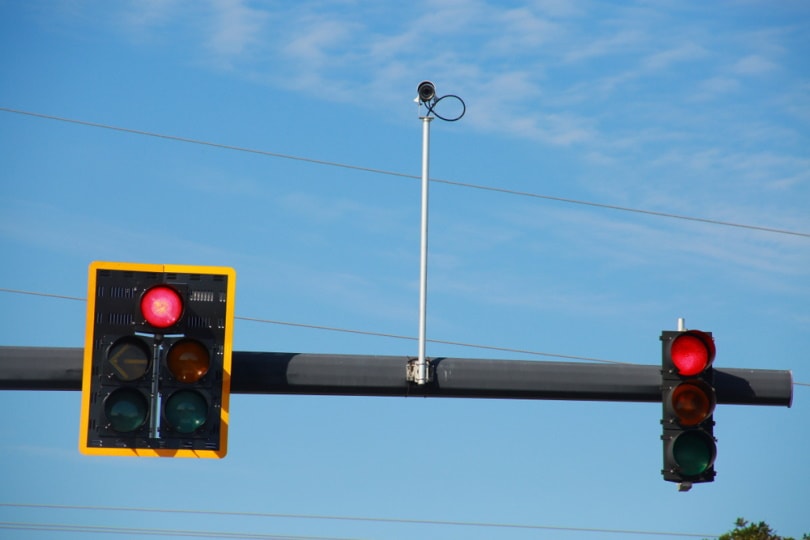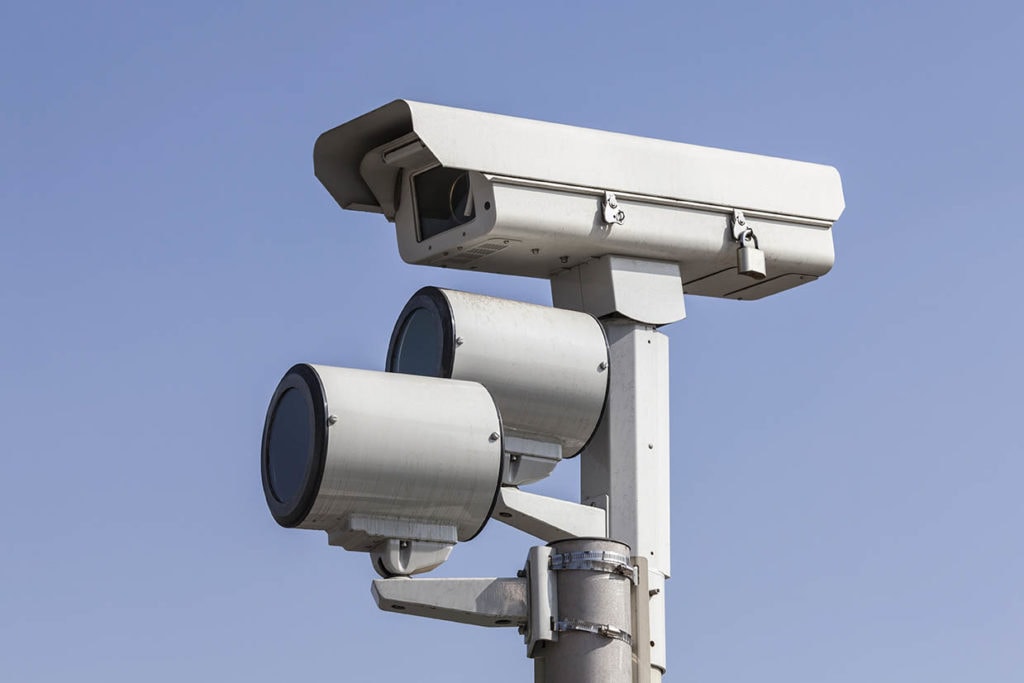How Do Red Light Cameras Work?
Last Updated on

Red light cameras include cameras, triggers, and a computer. The computer is connected to the triggers and camera. If the trigger is set off, cameras will automatically be taken while a car goes through the intersection. Tickets can then be issued based on those photographs.
This is just a general overview of how red light cameras work. Continue reading to get a better picture of how all these elements work together and catch you in the act.

Parts Of Red Light Camera Systems
Before we dive into how red light cameras work, it’s important to understand the elements of a red light camera system. Red light camera systems include three main elements: cameras, triggers, and a computer.
Camera
The camera is the part most people are familiar with. In most areas, there will be a camera located on all four corners of the intersection. The exact camera type differs in location. Older systems use film cameras, whereas newer systems use digital cameras.

Trigger
In order for the camera to go off, a trigger has to be set off. Most red light systems include two induction loop triggers. These triggers are normally placed underneath the road near the stop line. This trigger is simply an electrical wire that is buried right underneath the asphalt. Of course, this trigger has to be connected to a power source and meter.
Computer
The computer is the brains of the operation. It causes the camera to go off whenever the trigger is activated. In other words, it is what makes all three of the parts work together seamlessly in order to get pictures of a red light violation.
How These Elements Work Together
Now that we know the parts of a red light system, let’s learn how they work together.

The Trigger Gets Set Off
It’s easiest to begin looking at the trigger. Induction triggers are primarily used for red light systems. Occasionally, you will find other trigger options, such as radar, laser, air tube, and video loop, but the magnetic approach from the induction trigger is the most common.
The magnetic field around the wire creates or induces an electric volt. The intensity of this induction can change based on other factors. Whenever a car pulls up to the intersection, for example, it will affect the magnetic field around the trigger. A meter is connected to the magnetic field and constantly monitors the trigger’s inductance level. If the induction level drops, it then sets off the camera.
The Computer Controls When the Triggers Are Active
No matter what kind of a trigger system is used, the computer is connected to it. Thanks to this computer, the trigger’s changes in inductance are ignored whenever there is a green light. As soon as a red light appears, the computer begins tracing the changes in inductance.

The Computer Causes the Camera to Snap Photos
If the inductance level changes while the system is turned on, the computer will activate the camera and snap a picture of your vehicle. In most cases, two photos will be taken. The first shows when you entered the intersection and the other takes a photo of the license plate.

Conclusion
Hopefully, the next time you see a red light camera, you know how it works. There’s likely a trigger underneath the road that monitors cars going above. If the trigger is set off, the computer will have the camera take two photos to prove that you ran the red light.
So, make sure not to run any red lights, even if you live in an area that does not use red light cameras. Because so many accidents happen at intersections, it’s best to be cautious and avoid running red lights at all times.
Featured Image Credit: Mike Kuhlman, Shutterstock
About the Author Robert Sparks
Robert’s obsession with all things optical started early in life, when his optician father would bring home prototypes for Robert to play with. Nowadays, Robert is dedicated to helping others find the right optics for their needs. His hobbies include astronomy, astrophysics, and model building. Originally from Newark, NJ, he resides in Santa Fe, New Mexico, where the nighttime skies are filled with glittering stars.
Related Articles:
How to Clean a Refractor Telescope: Step-by-Step Guide
How to Clean a Telescope Eyepiece: Step-by-Step Guide
How to Clean a Rifle Scope: 8 Expert Tips
Monocular vs Telescope: Differences Explained (With Pictures)
What Is a Monocular Used For? 8 Common Functions
How to Clean a Telescope Mirror: 8 Expert Tips
Brightfield vs Phase Contrast Microscopy: The Differences Explained
SkyCamHD Drone Review: Pros, Cons, FAQ, & Verdict
